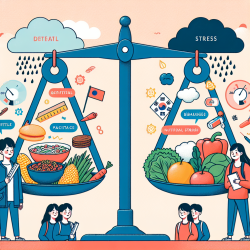Understanding the Impact of the COVID-19 Pandemic on Youth Mental Health
The COVID-19 pandemic has had profound effects on various aspects of society, including the mental health of children and adolescents. A recent study titled "Pediatric Suspected Suicides and Nonfatal Suicide Attempts Reported to United States Poison Control Centers Before and During the COVID-19 Pandemic" offers valuable insights into the trends and characteristics of youth mental health crises during this period. As practitioners, it is crucial to leverage these findings to enhance our support systems and interventions for young individuals.
Key Findings from the Study
The study utilized data from the National Poison Data System to examine trends in suspected suicides and nonfatal suicide attempts among children aged 6-19 years, comparing the pre-pandemic period (March 2017 - February 2020) with the pandemic period (March 2020 - February 2021). The analysis revealed a 4.5% increase in cases during the pandemic, with a notable shift toward younger age groups.
Interestingly, the study identified a biphasic trend: an initial decrease in cases during the early months of the pandemic, followed by a significant increase. This pattern highlights the complex interplay of factors affecting youth mental health during crises.
Implications for Practitioners
Understanding these trends is essential for practitioners aiming to improve outcomes for children and adolescents. Here are some actionable steps based on the study's findings:
- Early Intervention: The initial decrease in cases suggests a window of opportunity for early intervention. Practitioners should focus on strengthening family support systems and promoting open communication during crises.
- Addressing Risk Factors: The increase in cases during the later months of the pandemic underscores the need to address risk factors such as social isolation, anxiety, and depression. Implementing targeted interventions can help mitigate these risks.
- School-Based Support: The study found higher rates of incidents during school months. Schools should be equipped with resources and trained personnel to identify and support at-risk students.
Encouraging Further Research
While the study provides valuable insights, it also highlights areas for further research. Understanding the underlying causes of the observed trends, particularly the shift toward younger age groups, is crucial. Practitioners are encouraged to engage in or support research efforts that explore these dynamics in greater depth.
Conclusion
The findings from this study serve as a call to action for practitioners to enhance their strategies and interventions in supporting youth mental health. By staying informed and proactive, we can better navigate future crises and improve outcomes for children and adolescents.
To read the original research paper, please follow this link: Pediatric Suspected Suicides and Nonfatal Suicide Attempts Reported to United States Poison Control Centers Before and During the COVID-19 Pandemic.










